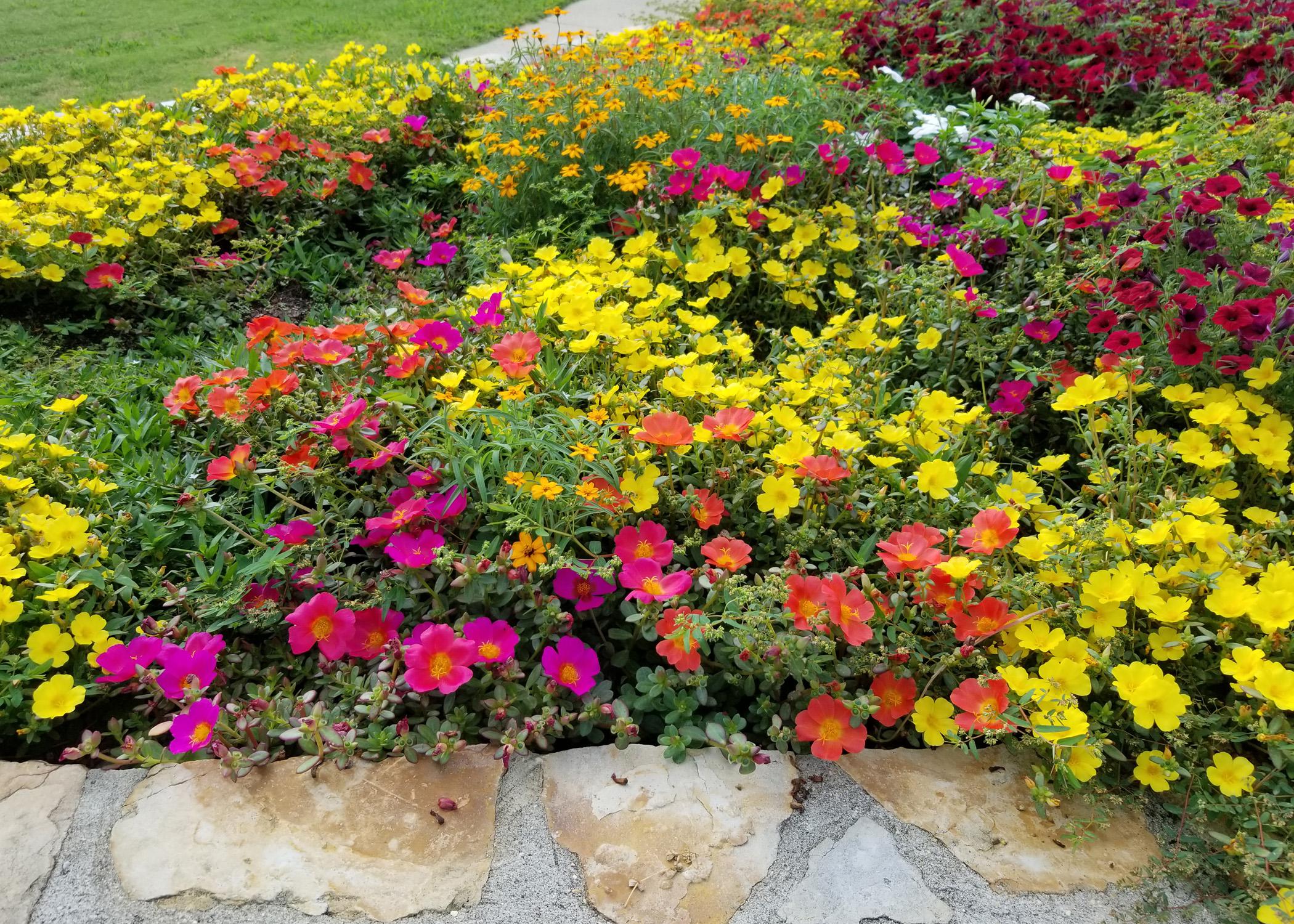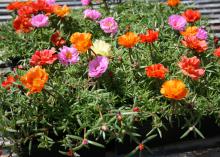Information Possibly Outdated
The information presented on this page was originally released on January 10, 2022. It may not be outdated, but please search our site for more current information. If you plan to quote or reference this information in a publication, please check with the Extension specialist or author before proceeding.
Make room for portulaca in your 2022 landscape
I follow a checklist for many of the plants I consider using in my coastal Ocean Springs garden and landscape each year. The plants need to thrive in heat and humidity, be drought tolerant and not need much garden supervision.
In other words, plants in my yard have got to be tough.
When I recommend tough garden plants, Portulaca is always near the top of the list. But Portulaca isn’t a single species; there are actually two species I look for that go by the common names of moss rose and purslane.
Moss rose, which botanically is Portulaca grandiflora, is a vigorous and low-growing plant that forms a very colorful, moss-like, ground-hugging carpet. It’s perfect for our hot summer landscapes.
Moss rose has fleshy, succulent foliage composed of clusters of bright-green, 1-inch-long cylindrical leaves arranged in clusters on stems. The flowers, both semi- and fully doubles, resemble tiny roses, hence the common name. Flower colors include yellow, orange, bright pink and red.
Moss rose, while drought tolerant, thrives in consistently moist planting beds or subirrigated containers. And a big plus for me is that moss rose doesn’t need to be pinched -- a pruning method used to discourage branching -- as it has a naturally tight and dense spreading growth habit.
The other must-have Portulaca is purslane, known botanically as Portulaca oleracea. Think of purslane as the bigger, rougher cousin of moss rose. The flowers are bigger, and the fleshy foliage has a flattened, teardrop shape.
Purslane flowers are up to 2 inches across and are available in a wide color palette of rose, scarlet, apricot, orange, yellow and white. There are even a few bicolors that can be found in garden centers.
Purslanes are generally low-growing and spreading flowering annuals that I think have a unique, tropical look. The stems are purplish-green, and the leaves are bright green. Regular pinching keeps purslane dense and full.
One of my favorite ways to grow moss rose and purslane is to take advantage of their spreading and trailing growth characteristics and use them in patio containers, raised beds and hanging baskets.
These two portulaca species are heavy feeders that require adequate nutrition throughout the season for best flowering and growth. I fertilize with a water-soluble 20-10-20 or 20-20-20 fertilizer, always following label instructions.
You can allow the soil or container mix to dry out moderately between watering, as moss rose and purslane have a high drought tolerance. But I’ve found that I get the very best flowering when the root zone is kept consistently moist, just not waterlogged.
Moss rose and purslane last all summer and into the fall. As temperatures begin to drop, keep the soil on the dry side, and the plant will reward you with blooms into the fall.
Besides liking the summer heat and humidity, moss rose and purslane like full sun. Best flowering occurs when the plants receive about six hours of full sun a day. I find it fascinating that the flowers close in late afternoon and early evening, as well as on cloudy days and when the plant is under stress.
So be on the lookout for portulaca transplants later this spring. Or for the adventurous, Moss rose and purslane can be grown from seed, but just remember the seeds are extremely tiny.




